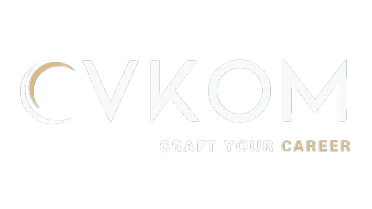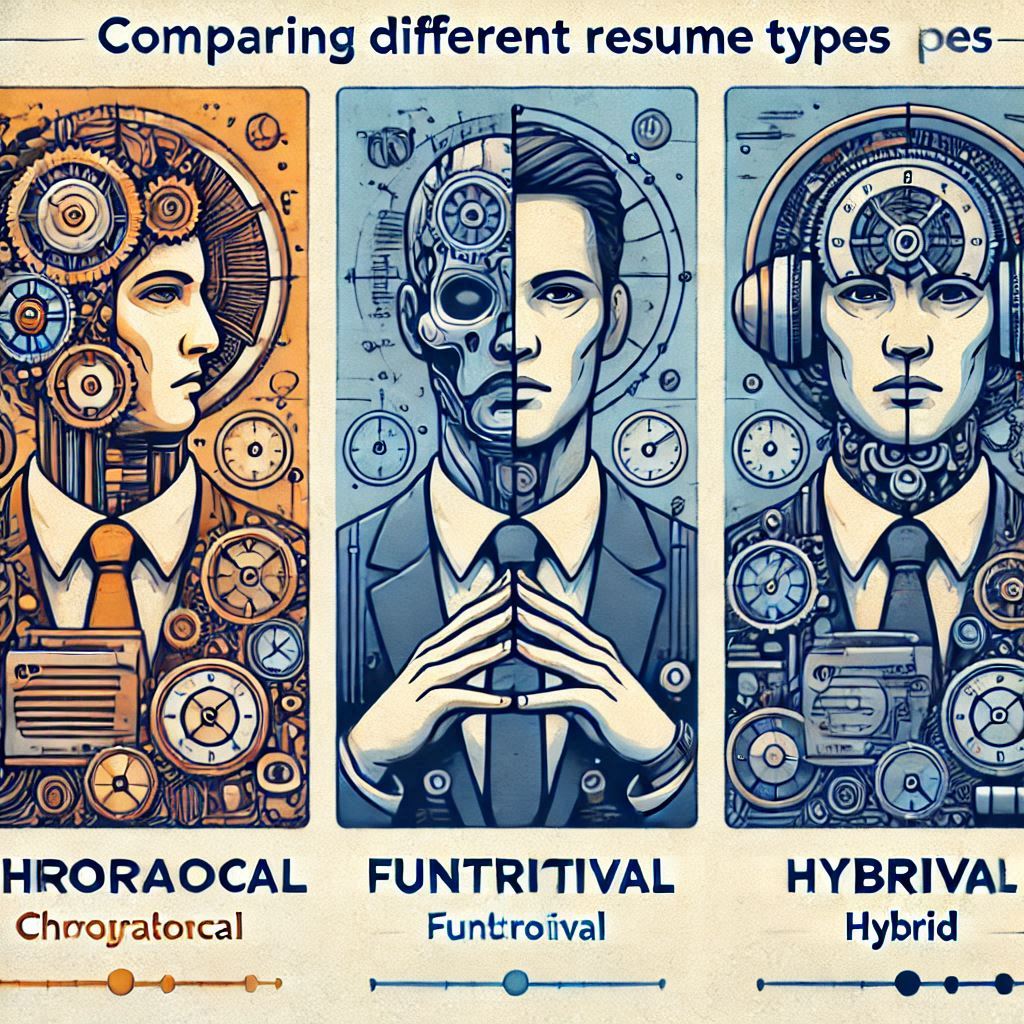Comparing Different Resume Types (Chronological, Functional, Hybrid)
When crafting a resume, choosing the right format is just as important as the
content. Different resume types—chronological, functional, and hybrid—serve
various purposes and are suited to different career stages and goals. At CVKOM,
we aim to help job seekers understand which resume type best highlights their
skills and experiences. Here’s a detailed comparison of these three formats to
help you decide which one is right for you.
Chronological Resume:
The chronological resume is the most commonly used format and is ideal for candidates with a clear and consistent work history.
Features:
- Lists work experience in reverse chronological order, starting with the most
recent role.
- Highlights steady career progression and long-term employment.
Advantages:
1. Easy to Read: Employers can quickly see your career trajectory.
2. Preferred by Recruiters: This format is widely recognized and
appreciated for its straightforward structure.
3. Showcases Experience: Ideal for candidates with relevant job experience.
Disadvantages:
1. Gaps in Employment: May draw attention to employment gaps or frequent
job changes.
2. Limited Focus on Skills: Emphasizes work history over transferable
skills.
Best For:
- Candidates with a stable work history.
- Those seeking roles in traditional or corporate environments.
Functional Resume:
The functional resume emphasizes skills and achievements rather than a chronological work history. It’s best suited for individuals changing careers,
recent graduates, or those with gaps in their employment.
Features:
- Focuses on skills and competencies over job titles and dates.
- Organizes content by skill categories.
Advantages:
1. Skills-Oriented: Highlights your abilities and achievements.
2. Minimizes Gaps: De-emphasizes employment dates, making it easier to
conceal gaps.
3. Career Change-Friendly: Ideal for showcasing transferable skills.
Disadvantages:
1. Less Familiar: Some recruiters may find it unconventional.
2. Limited Detail on Work History: Lacks context about previous roles and
responsibilities.
Best For:
- Career changers or recent graduates.
- Those with significant gaps in their employment history.
Hybrid Resume:
The hybrid resume combines elements of both chronological and functional resumes. It balances skills-focused sections with a detailed work history.
Features:
- Highlights skills and achievements while also listing work experience in
reverse chronological order.
- Blends flexibility with traditional formatting.
Advantages:
1. Versatile: Works for various career stages and industries.
2. Balanced Approach: Provides a comprehensive view of skills and work
history.
3. Customizable: Allows candidates to emphasize their strongest
qualifications.
Disadvantages:
1. Time-Consuming: Requires careful customization to ensure balance.
2. Not Always ATS-Friendly: Complex formatting can sometimes disrupt ATSreadability.
Best For:
- Candidates with a mix of relevant skills and consistent work experience.
- Professionals seeking flexibility in showcasing their qualifications.
How to Choose the Right Resume Type
When selecting a resume format, consider your career goals, industry standards,
and employment history. For example:
- Use a chronological resume if you have a solid, consistent work
history.
- Opt for a functional resume if you’re changing careers or need to
highlight transferable skills.
- Choose a hybrid resume to blend skills with a structured work
history.
Conclusion
Each resume type serves a unique purpose and caters to different career paths.
Whether you’re a seasoned professional, a career changer, or a recent graduate,
understanding the strengths and weaknesses of chronological, functional, and
hybrid resumes can help you make the right choice. At CVKOM, we specialize in
creating tailored resumes that align with your goals and the latest industry
trends. Let us help you craft a resume that makes a lasting impression.
Elevate your job search with CVKOM’s expert resume design and consultation
services!




